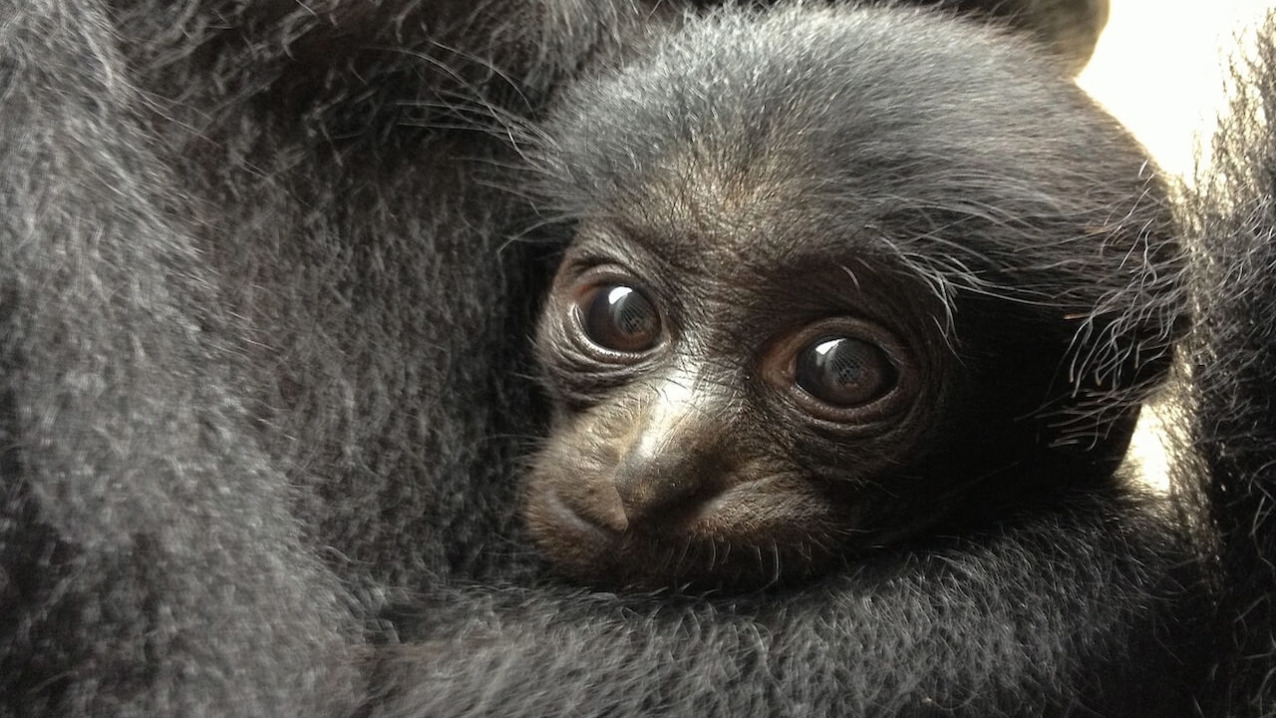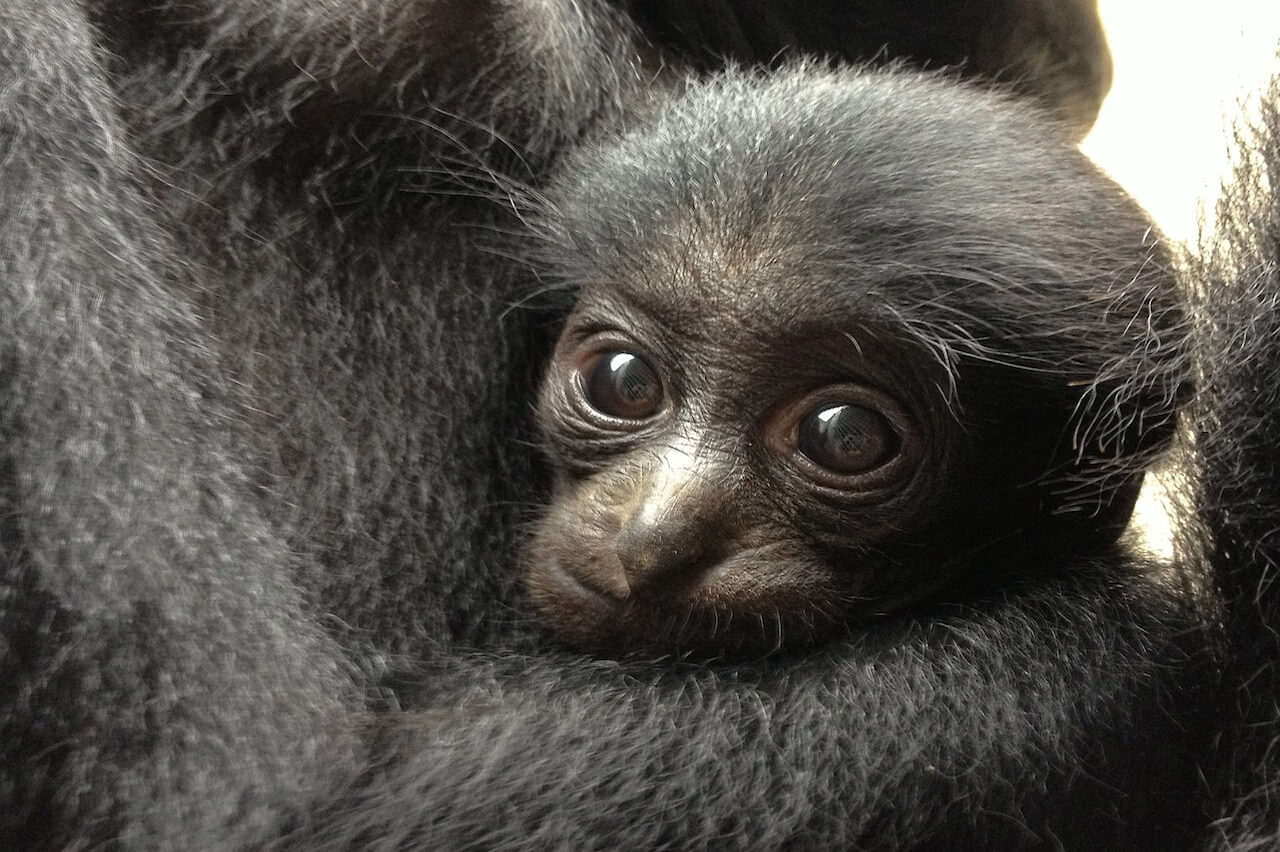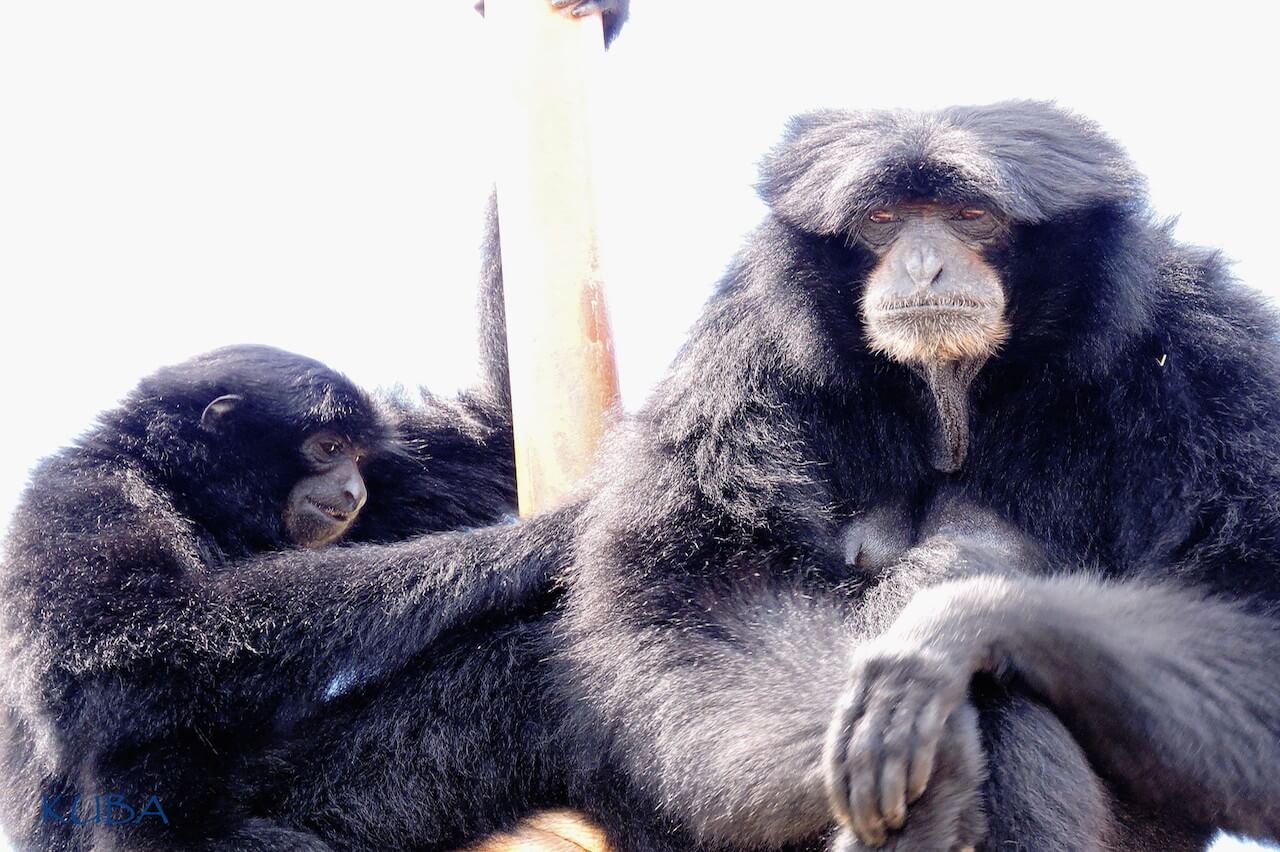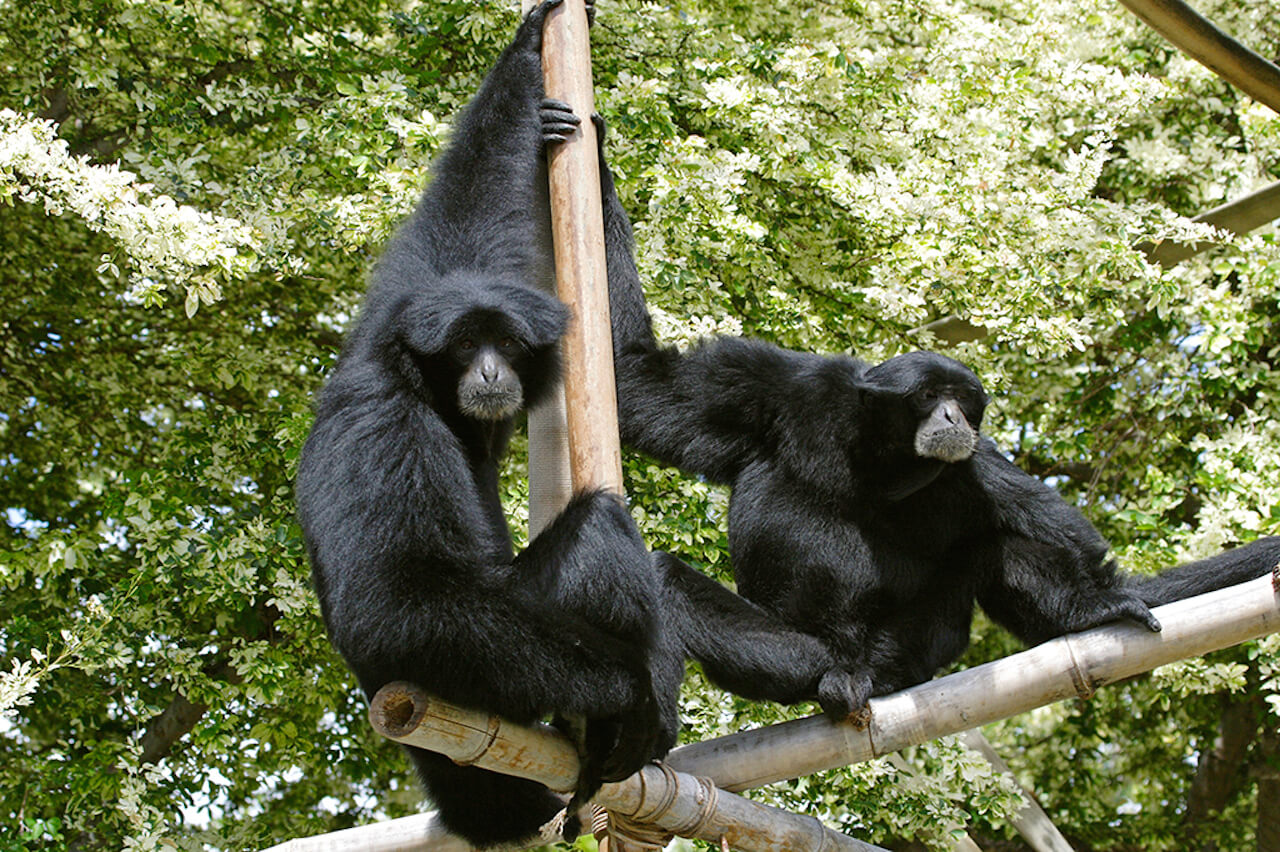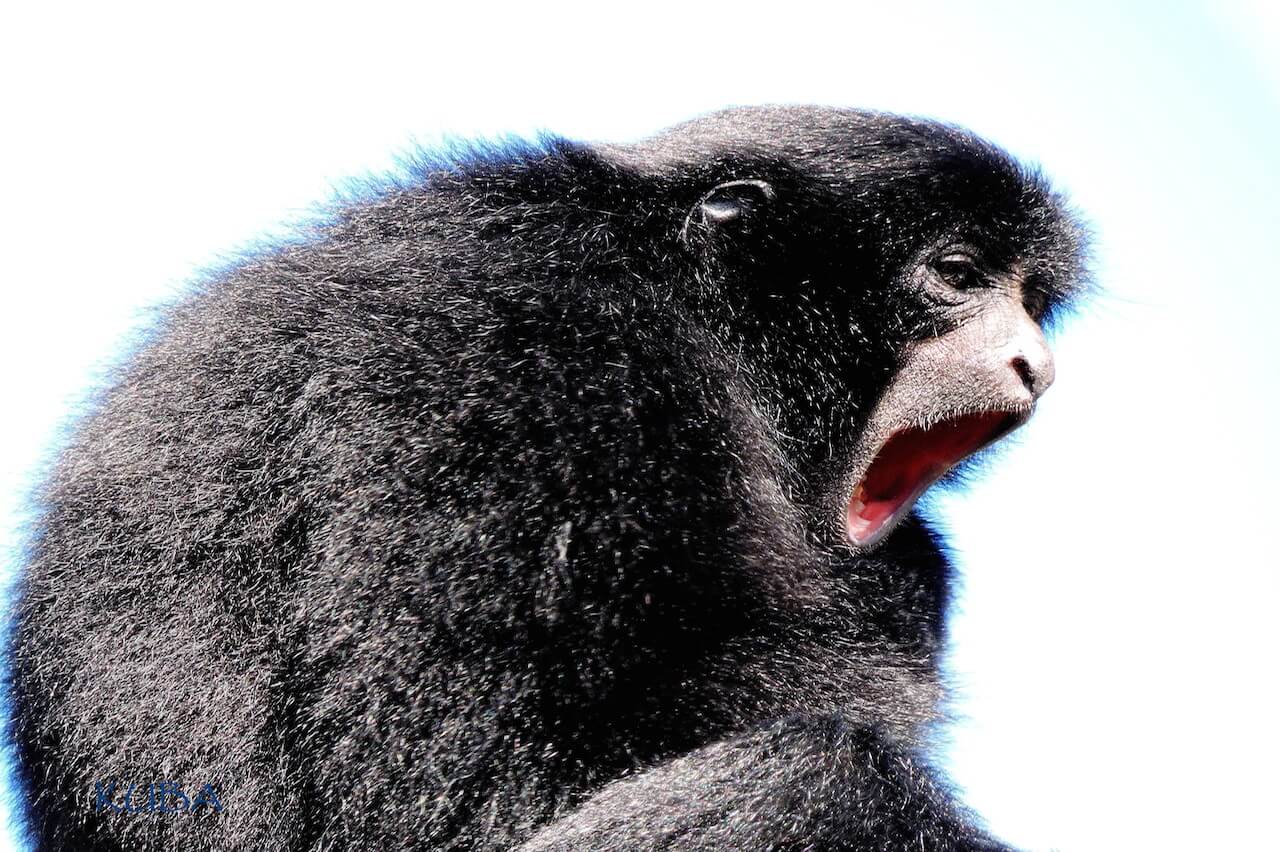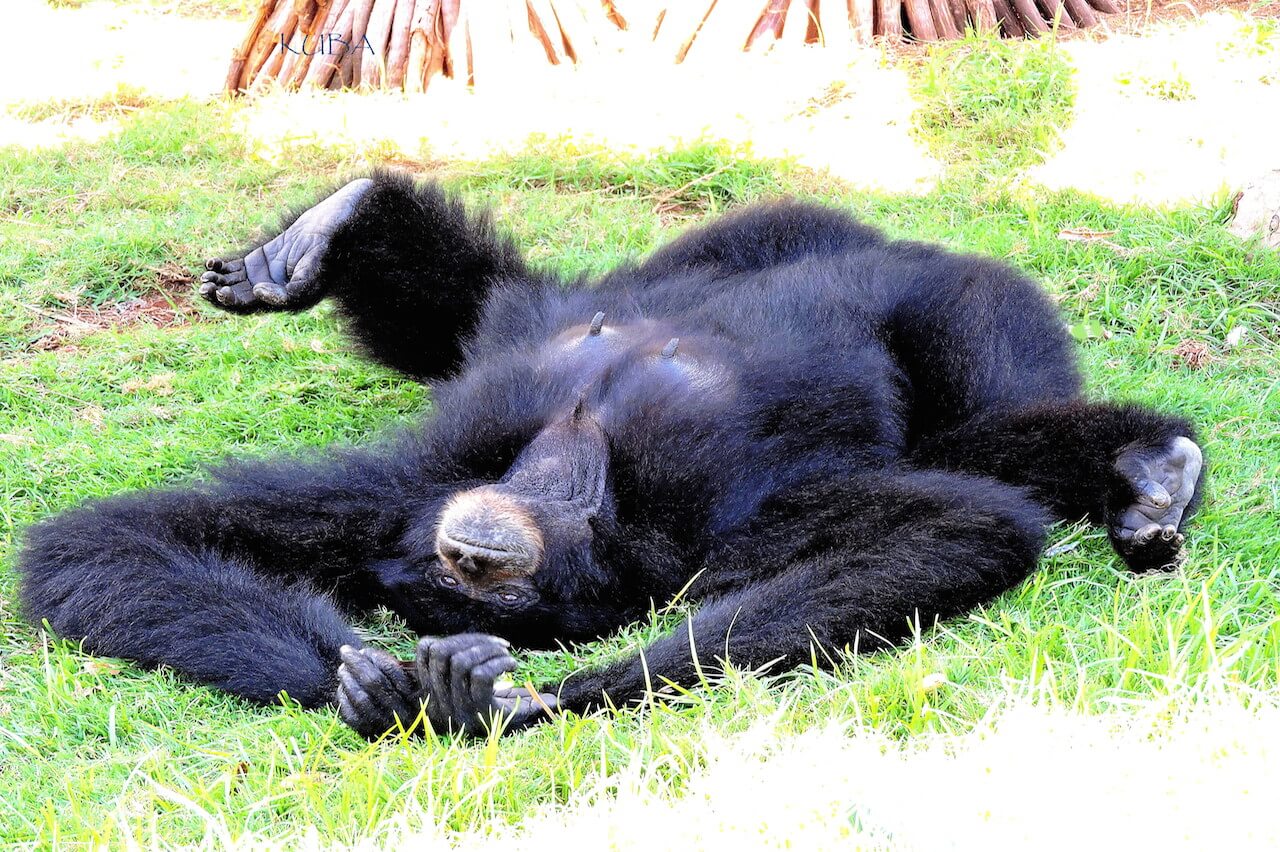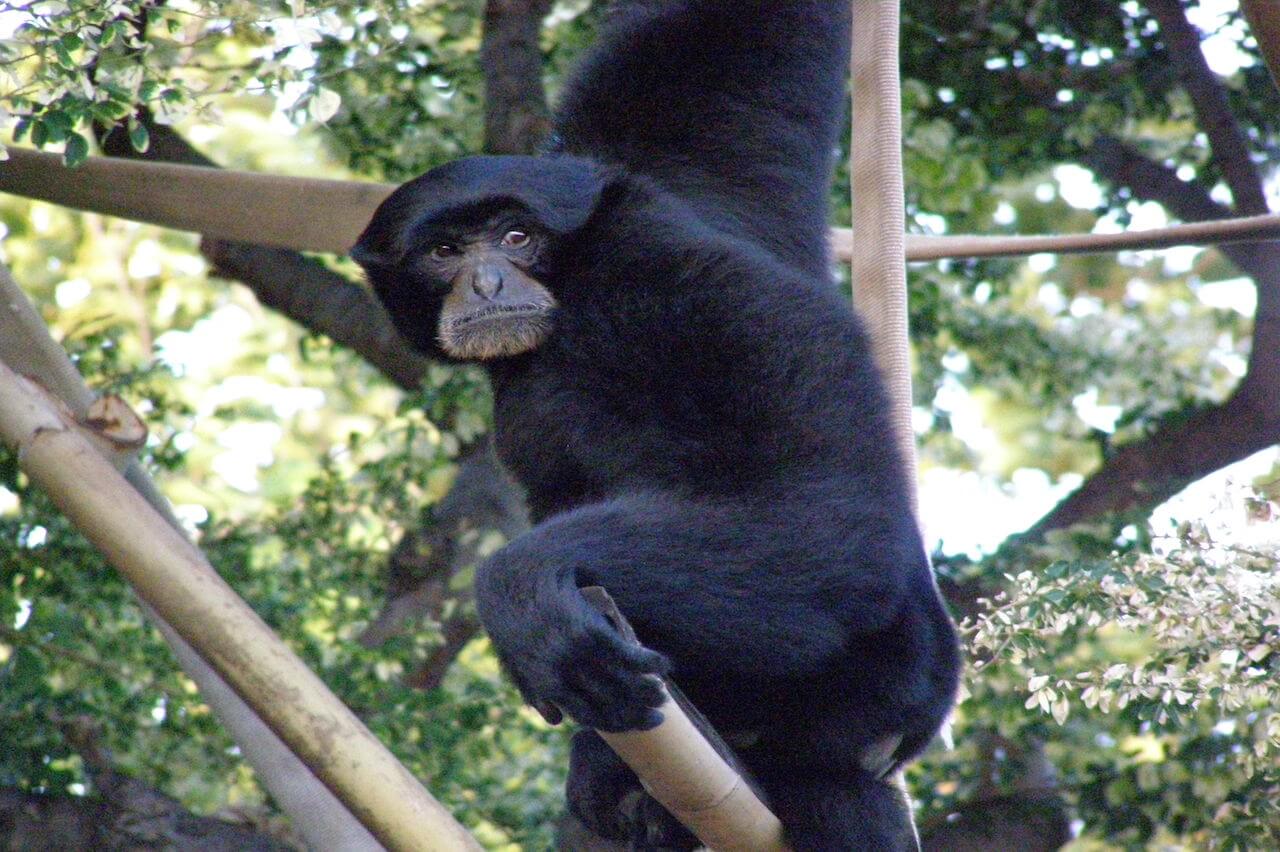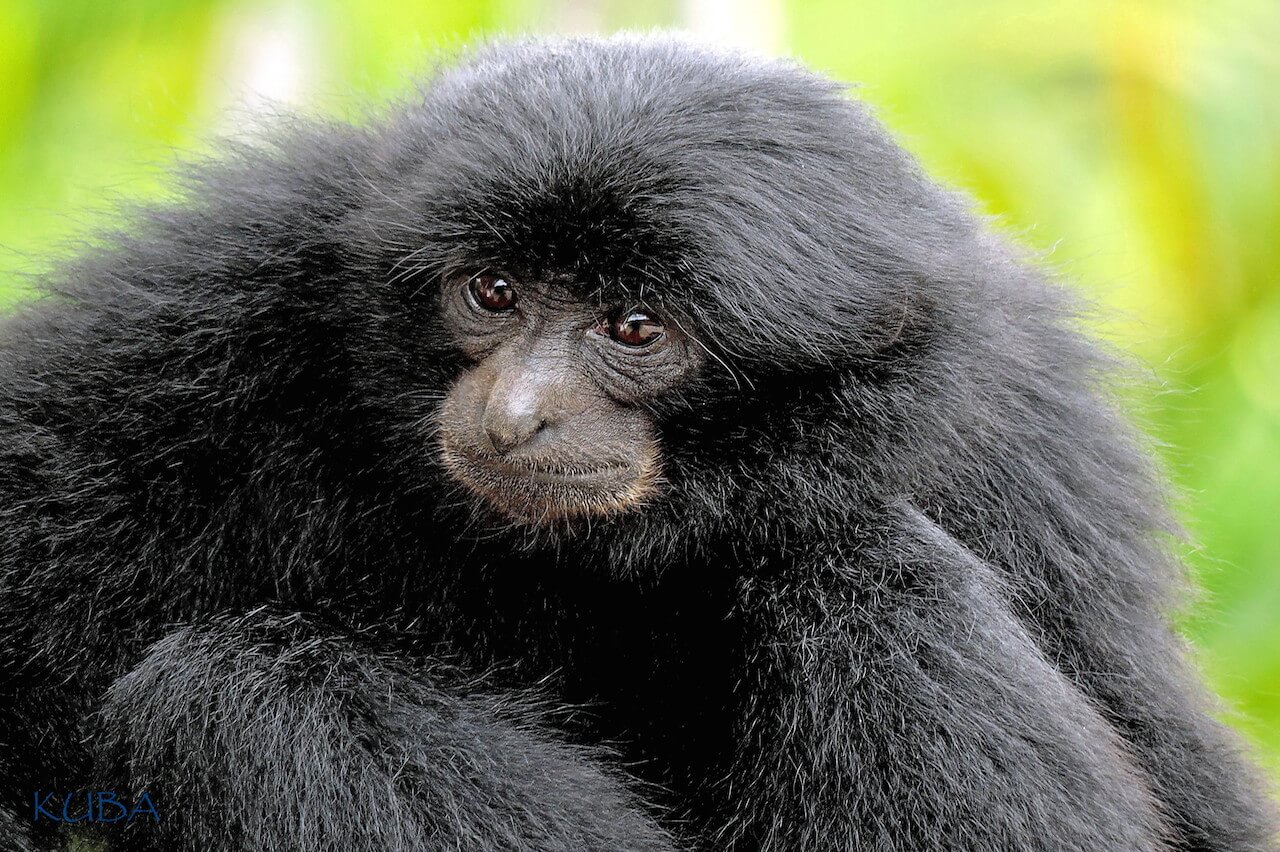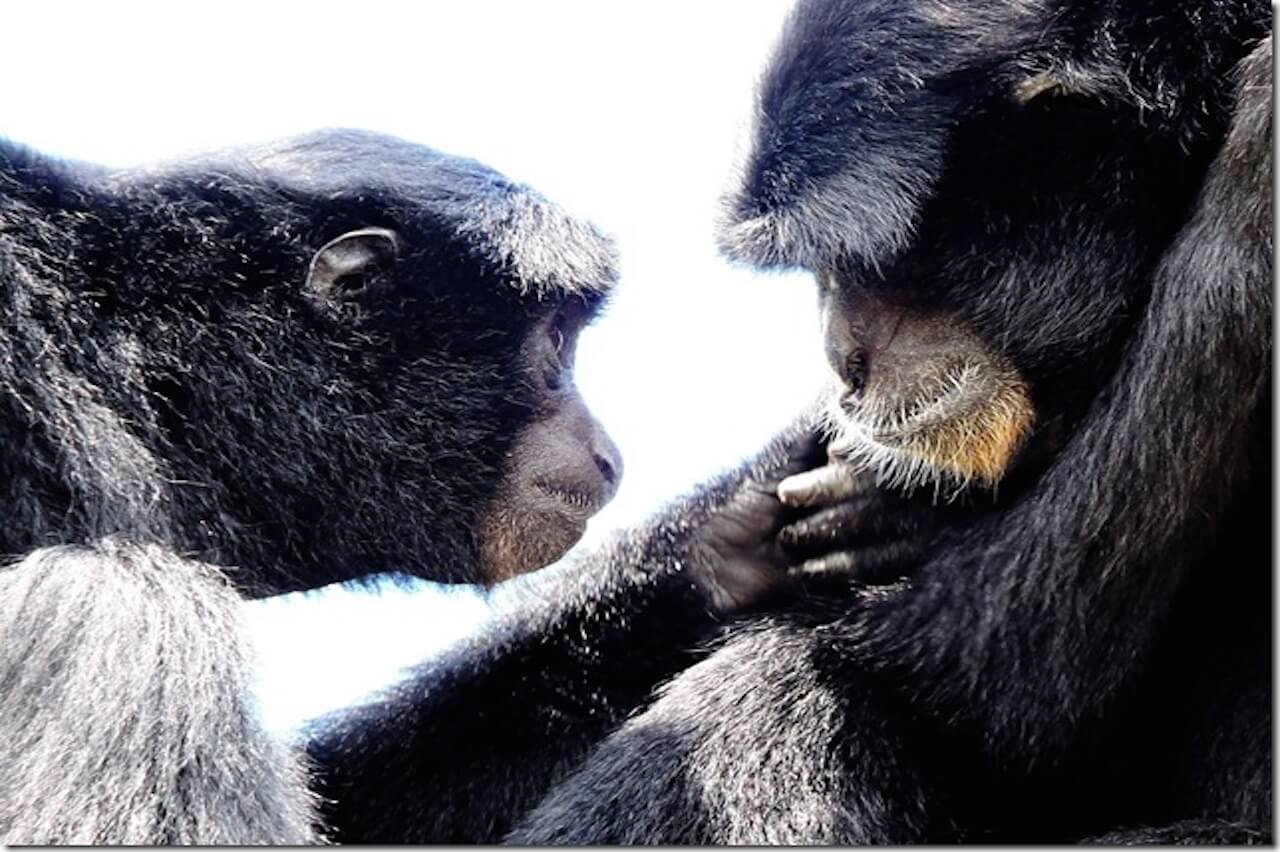symphalangus syndactylus
Siamang
About Me
Scientific Name: Symphalangus syndactylus
Description
The Siamang is a gibbon and like the latter, it is an ape, not a monkey. The chief characteristics distinguishing apes from monkeys are the absence of a tail, their more or less upright posture and the high development of their brain. The Siamang is always black in color, with reddish-brown eyebrows. It differs from other gibbons in that it has a webbing between the second and third toe.
Fun Facts
- Along with other gibbons, the Siamangs are the top trapeze artists of the animal world. They leap with confidence across formidable gaps between branches, launching themselves 30-50 feet, using their hands as hooks. This mode of locomotion is called brachiation.
- Kingdom: Animalia
- Phylum: Chordata
- Class: Mammalia
- Order: Primates
The Siamang is a gibbon and like the latter, it is an ape, not a monkey. The chief characteristics distinguishing apes from monkeys are the absence of a tail, their more or less upright posture and the high development of their brain. (Gorillas, chimpanzees and orangutans are also apes.)
The Siamang is always black in color, with reddish-brown eyebrows. It differs from other gibbons in that it has a webbing between the second and third toe. The largest of the gibbon family, Siamangs are also the best at walking on two legs.
Like other gibbons, they have tough, horny pads on their buttocks known as ischial callosities. Since Siamangs and Gibbons build no sleeping nest, the pads help them spend a comfortable night seated on tree branches safe from predators.
Male and female are similar in size, growing to 30-35 inches in length and weighing approximately 23 pounds.
Siamangs range through southeastern Asia and are found in some numbers in the Malay Peninsula and Sumatra.
Along with other gibbons, the Siamangs are the top trapeze artists of the animal world. They leap with confidence across formidable gaps between branches, launching themselves 30-50 feet, using their hands as hooks. This mode of locomotion is called brachiation. While their arms are used for travel, their feet are used to carry objects. When walking, Siamangs will hold their arms above their heads for balance.
Siamangs live in family groups lead by a dominant male. They are protective of one another and sociable among themselves, huddling together in groups of two or three when they sleep.
The call of the Siamang excels that of other gibbons because of the animal’s sound-amplifying throat sac. The female emits a series of barks alternated with booms resonated in the vocal pouch, which she blows up like a balloon. The mate’s higher scream is usually uttered at each of the two accelerations of the female, and their combined “song” rises in pitch to end with the thunderous pouch boom of the male. It is quite a display of territory and power and can be heard for a considerable distance.
Siamangs eat fruit, leaves, insects, nuts, small animals, birds and bird’s eggs. In the zoo they are fed fruit, vegetables and monkey chow.
Siamangs bear one offspring after a seven- month gestation period. At birth, the young are naked, and for the first few months, the baby clings to the mother’s abdomen. She, in turn, keeps her legs partially raised to provide warmth and support. By the age of two, the baby is independent but still very much a part of the family.
Sexual maturity is reached at about seven years of age. In the wild they live from 25 to 30 years.
Like other gibbons, the Siamang is declining in numbers as man enters its forested territory, often killing the mothers in capturing the young for a lucrative pet market.
Name Sex DOB
- Mahina F 04-29-87
- Elvis M 01-01-99 (est)
Other Mammals
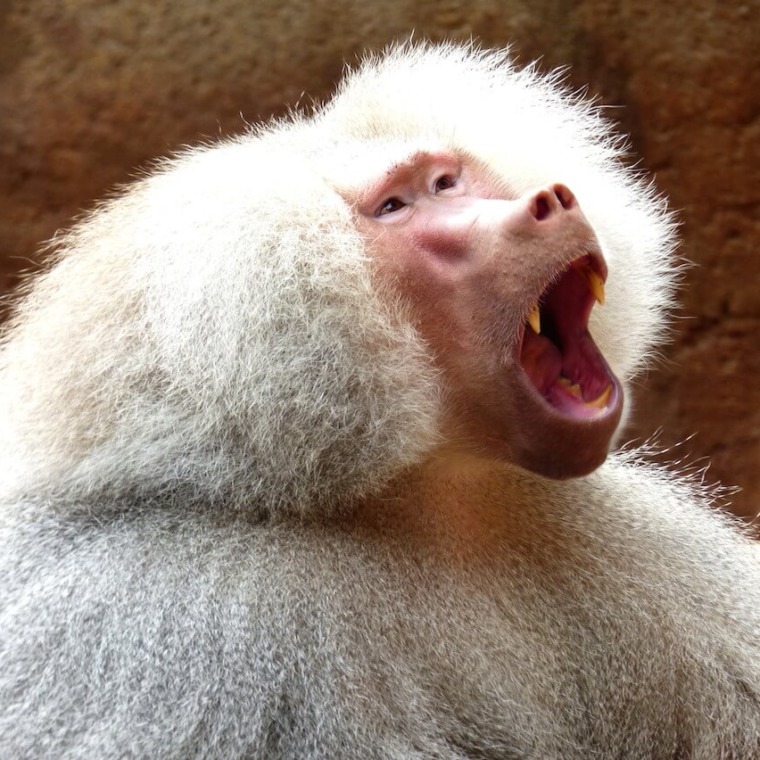
Sacred Baboons are common throughout northeastern Africa, but are extinct in the Nile region and Egypt, where they originally received their name and were worshiped by the ancient Egyptians.
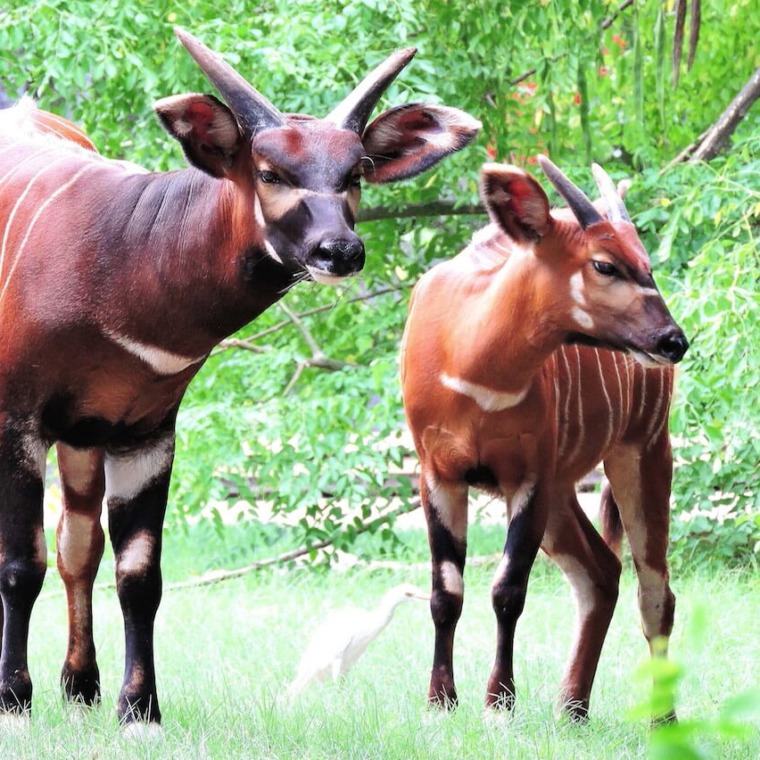
Bongo are most active at dawn and dusk, and often forage near the edges of wooded areas. They normally shy in the wild and flee into the forest for cover at the slightest provocation.
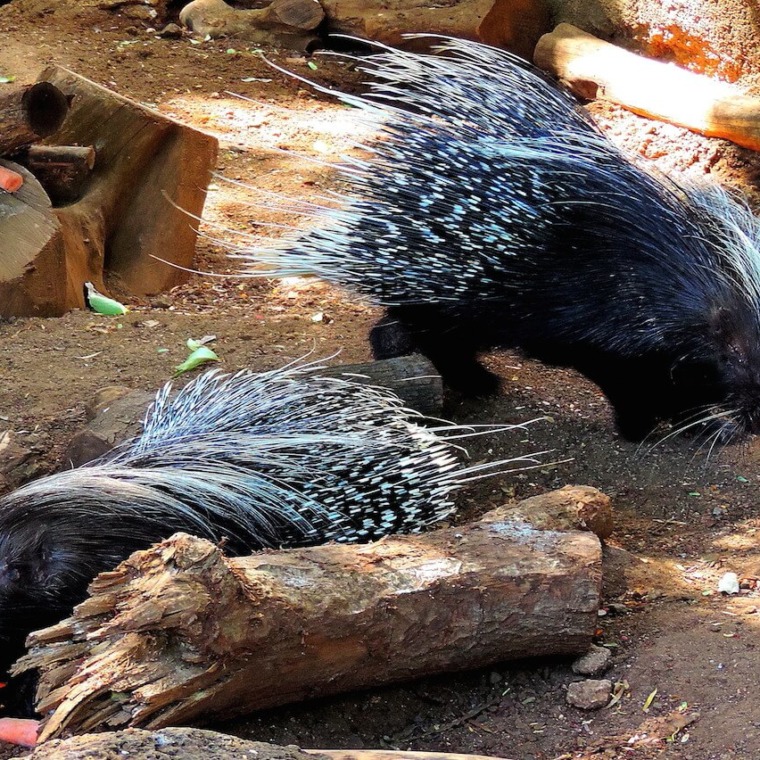
The North African crested porcupine is nocturnal. They are very adaptable and can be found in forests, on plantations, in rocky or mountainous areas as well as in deserts.
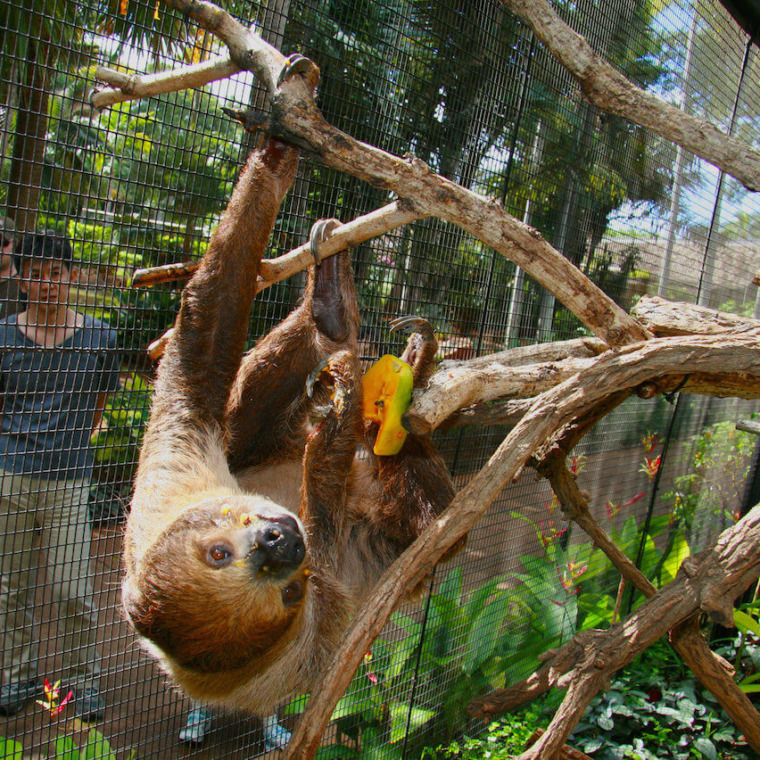
Sloths are found in Central and South America in the rain forest canopy. The Linne’s two-toed sloth is found in such countries as Nicaragua, Columbia, Venezuela, Surinam, Guyana, French Guiana, North Central Brazil, and Northern Peru.
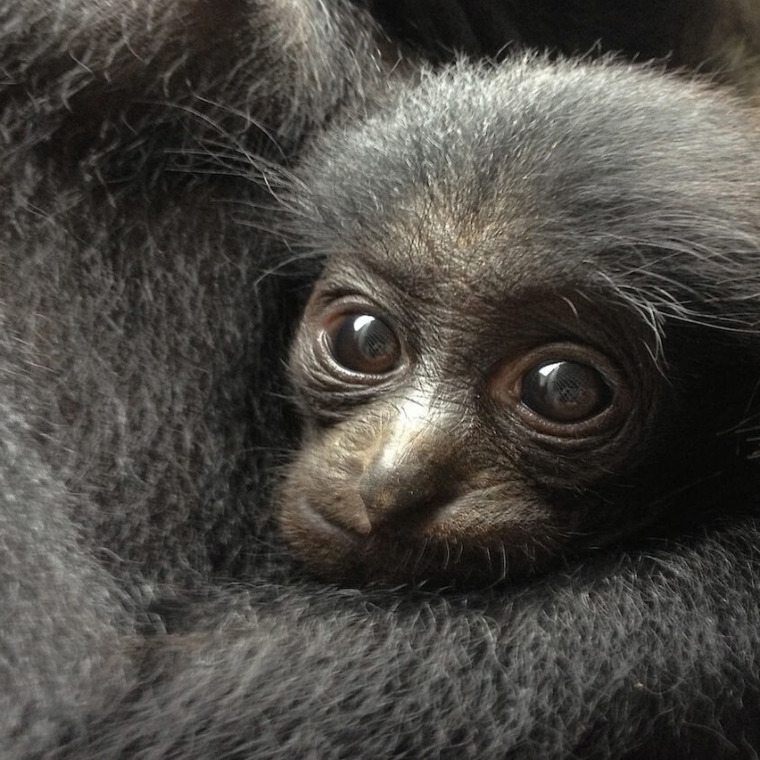
Siamangs range through southeastern Asia and are found in some numbers in the Malay Peninsula and Sumatra.


